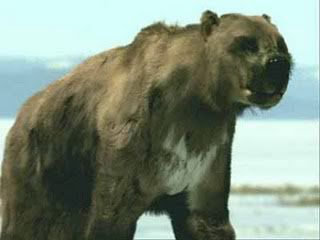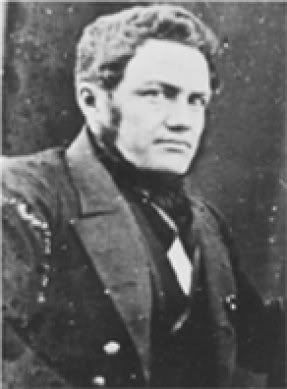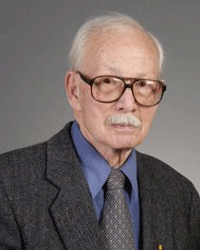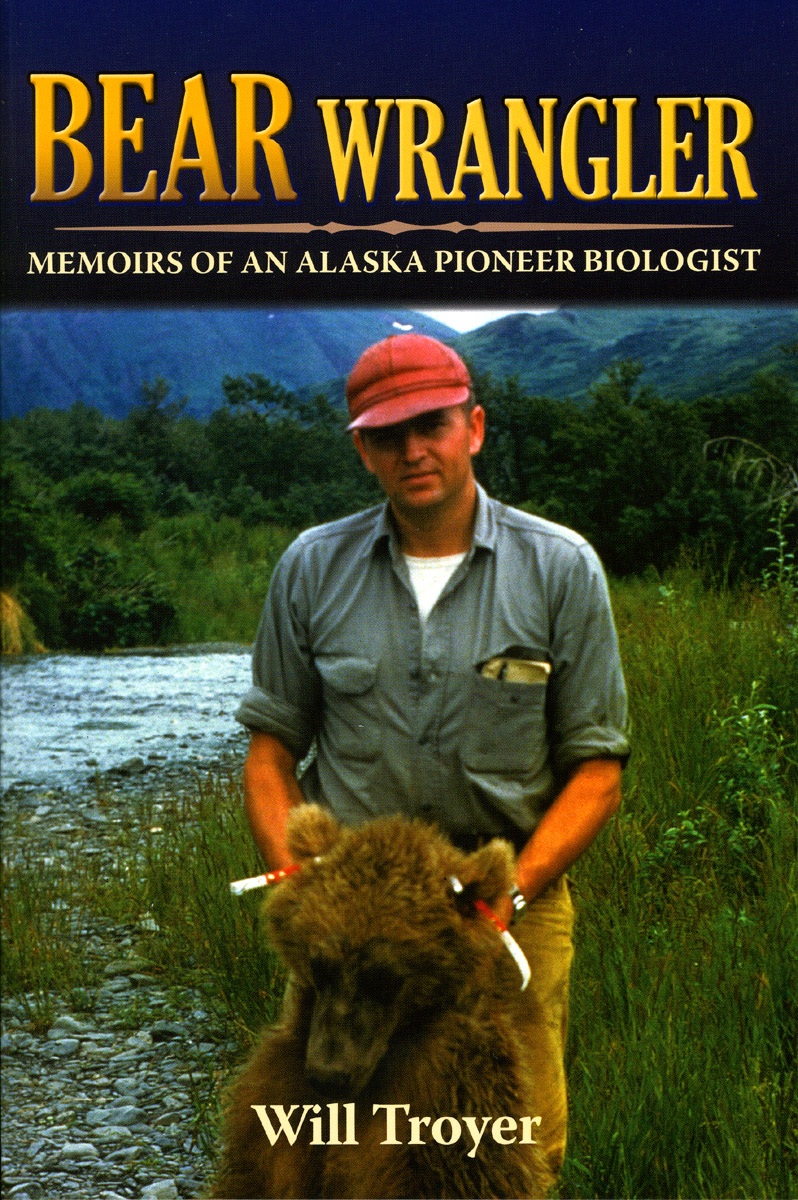Post by grrraaahhh on Oct 10, 2010 19:42:54 GMT -9
The "Bear God" - Björn Olof Lennartson Kurtén (1924-1988)
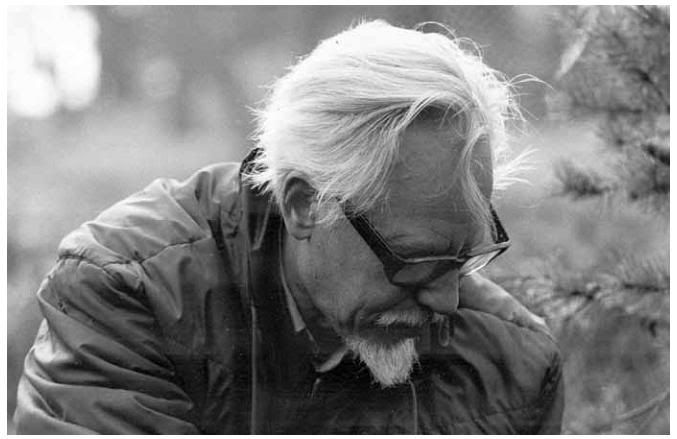
Bjorn Kurten (1979).
Finnish writer, professor of paleontology at the University Helsinki, who gained international fame as a writer with his popular science fiction books of ancient men, DEN SVARTA TIGERN (1978, Dance of the Tiger) and MAMMUTENS RÅDARE (1982, Singletusk). Along with George Gaylord Simpson in America, Björn Kurtén was the founding father of an important scientific movement that united Darwinian theory with empirical studies of fossil vertebrates. He was also a leading student of fossil bears – and by chance his first name Björn means "bear" in his native Swedish.
"Kurtén has managed to insinuate into his story – in a way so subtle and natural that we can scarcely recognize he is teaching as well as novelizing - every fact and theory that I know (and several, undoubtedly, that I don't) about Neandertals, Cro-Magnons, human evolution during the Ice Age, glacial geology, and ecology and behavior of the great Ice Age mammals, including mammoths and saber-toothed tigers." (Stephen Jay Gould in his introduction to Dance of the Tiger)
Björn Kurtén was born in Vaasa, the son of Lennart Kurtén, a bank director, and Hjördis (Ståhlberg) Kurtén. While in school he started to write adventure stories. His first book, DET NYA JAKTPLANET (1941), was published by Schildt. It was followed by SPÅRET FRÅN ULTIMA ESPERANZA (1945). After graduating from the Vasa Svenska Samskola, Kurtén entered in 1943 the University of Helsinki, where he studied geology and zoology. He also did his military service, resuming his studies in 1945. For a period, Kurtén was editor of Studentbladet. During the next decades he wrote a number of popularized essays about paleontology for Hufvudstadsbladet and Vasabladet.
In 1950 Kurtén married Ruth Margareta Nordman; they had four children. Before finishing his studies in Helsinki, where there was only a small fossil mammal collection, Kurtén studied paleontology in Sweden at the University of Uppsala under Birger Bohlin and received his Ph.D. in 1954. Kurtén's first major scientific publication, THE CHINESE HIPPARION FAUNA, appeared in 1952. Especially Georg Gaylord Simpson's (1902-1984) Tempo and Mode in Evolution (1944) influenced his early works. Several of Kurtén paleonthological studies in the 1950s and 1960s dealt with the family of Ursidae, SEX DIMORPHISM AND SIZE TRENDS IN THE CAVE BEAR (1955), LIFE AND DEATH OF THE PLEISTOCENE CAVE BEAR (1958), ON THE BEARS OF THE HOLSTEINIAN INTERGLACIAL (1959), EVOLUTION OF THE POLAR BEAR, URSUS MARITIMUS PHIPPS (1964), PLEISTOCENE BEARS OF NORTH AMERICA (1966-1967). During the decades, he learned to know almost every collection of bears in Europe. Kurtén suggested that Cro-Magnons may have contributed to the extinction of the fragmented populations of the Ursus spelaeus, the Cave Bear. Also big and small cats fascinated Kurtén. His monographs on fossil cats include ON THE EVOLUTION OF THE EUROPEAN WILD CAT (1965), GEOGRAPHIC VARIATION IN SIZE IN THE PUMA (1973), and PLEISTOCENE JAGUARS IN NORTH AMERICA (1973).
From 1955 to 1972 Kurtén was lecturer at the University of Helsinki. He was also a researcher at the University of Florida, a visiting professor at the University of Harvard (1971-71) and Personal Professor of Paleontology at the University of Helsinki from 1972 to 1988. In Spain and Tunisia Kurtén participated in scientific excavations. He died in Helsinki on December 28, 1988. Throughout his life, Kurtén remained interested in bears. Before his death, he visited in 1987 the Noboribetsu Bear Park, Hokkaido. Kurtén received several awards from his popular scientific works, including the State award for Public Information (1970 and 1980) and Unesco's Kalinga Award. Earlier it had been given among others to George Gamow, Fred Hoyle, Julian Huxley, Konrad Lorenz, Margaret Mead, and Bertrand Russell. He was also an honorary member of the Anthropological Association of Greece (AEE).
Much of his writing Kurtén did in the achipelago, where he spent his summers with his family. Among Kurtén major scientific publications are his dissertation ON THE VARIATION AND POPULATION DYNAMICS OF FOSSIL AND RECENT MAMMAL POPULATIONS (1953), PLEISTOCENE MAMMALS OF EUROPE (1968), published in the same year in Sweden, Great Britain, Germany, Italy, France and Holland, and PLEISTOCENE MAMMALS OF NORTH AMERICA (1980), with Elaine Anderson. INTE FRÅN APORNA (1971, Not from the Apes) was also translated into several languages. In 1988 appeared ON EVOLUTION AND FOSSIL MAMMALS, a collection of earlier studies.
"I suspect that our view of men who live in close contact with nature is colored by the romantic image of the taciturn Red Indian, the epitome of the Noble Savage. In contrast, my experience of the men of forests and lakes is that they are loquacious to a degree, with a great fund of small talk; they carry their hearts on their sleeves: Aloofness is a simply a mask put on before a stranger. A large vocabulary is characteristic of the so-called primitive languages of today, and probably has been so for millenniums. To find a really primitive language I suspect you would have to journey back in time to the beginning of the Ice Age." (from Dance of The Tiger)
In the 1970s Kurtén returned to fiction with Dance of the Tiger, set in the era of 35 000 years ago in Scandinavia, during a thaw in the great Ice Age. It depicted story of Tiger, the chief of a Cro-Magnon tribe, and his wife, Morsinko, a Neanderthal woman. Neanderthals are white-skinned, Cro-Magnons dark; Cro-Magnon children and adults have smooth brows and small faces; the characteristic features of childhood act as "innate releasing mechanisms" for feelings of affection – a theory familiar from Konrad Lorenz's writings. "To the Whites, the Blacks were godlike, tall and eloquent, with a speech as varied and flexible as that of the birds. And there was something else. No White could look at the clear brow of a Black without feeling a mysterious tenderness, such as a child might evoke in the heart of his parents." Kurtén offered the explanation that the Neanderthals disappeared because they fell fatally in love with their black and beautiful Cro-Magnon neighbours, and brought them home to engage in sterile matches. The Cro-Magnon people, who were more aggressive and practiced slavery and violence, conquered the peace loving Neanderthal society, based on matriarchal system. Also the nobel writer William Golding has examined in The Inheritors the vanishing of the Neandertal – Golding saw them children of nature who are destroyed by the brutal invaders.
Singletusk, his next novel, continued the story of the family. Kurtén's picture of the early society is realistic without exaggerating the violent aspects of life. He portrayed the development, everyday life, and dreams and fears of the ancient people. Both of these prehistoric stories were mostly based on scientific theories. Kurtén's supposition that Neanderthals and ancestors of modern Homo Sapiens occupied same areas in the same time in Europe have been confirmed by fossil evidence.
For further reading: 'Björn Kurtén - a memorial volume', ed. by Ann Forstén, Mikael Fortelius, Lars Werdelin, in Annales Zoologici Fenici (1991, ); 'Muinaisaikojen elävöittäjä Björn Kurtén' by Anto Leikola in Kansallisgalleria: Suuret suomalaiset, ed. by Allan Tiitta et al. (1997); 'Kurtén, Björn' by Anto Leikola, in Suomen kansallisbiografia 5, ed. by Matti Klinge et al. (2005) - Other prehistoric fantasies: Johannes V. Jensen's Den Lange Rejse (1908-22); J.H. Rosny's La guerre de feu (1909); Edgar Rice Burrough's The Eternal Lover (1925); J. Leslie Mitchell's There Go Back (1932); William Golding's The Inheritors (1955); note also such romantic works by Jean Untinen-Auel as The Clan of the Cave Bear (1980), The Valley of Horses (1982), The Mammoth Hunters (1985), The Plains of Passage (1990) - See also: L.S.B. Leakey
Selected works:
* DET NYA JAKTPLANET: ÄVENTYRSBERÄTTELSE, 1941
* SPÅRET FRÅN ULTIMA ESPERANZA, 1945
* DE TRE KORSEN: ÄVENTYRSROMAN, 1948
* THE CHINESE HIPPARION FAUNA, 1952
* ON THE VARIATION AND POPULATION DYNAMICS OF FOSSIL AND RECENT MAMMAL POPULATION, 1953
* SEX DIMORPHISM AND SIZE TRENDS IN THE CAVE BEAR, URSUS SPELAEUS ROSENMÜLLER AND HEINBROTH, 1955
* LIFE AND DEATH OF THE PLEISTOCENE CAVE BEAR, 1958
* CHRONOLOGY AND FAUNAL EVOLUTION OF THE EARLIER EUROPEAN GLACIATIONS, 1960
* URMÄNNISKOR OCH SABELTIGRAR, 1961
* MÄNNISKANS UTVECKLING, 1963
* ISTIDENS DJURVÄRLD, 1964
* THE CARNIVORA OF THE PALESTINE CAVES, 1965
* PLEISTOCENE BEARS OF NORTH AMERICA. 1-2, 1966-67
* PLEISTOCENE MAMMALS OF EUROPE, 1968
* DINOSAURIERNAS VÄRLD, 1968 - The Age of Dinosaurus (tr. 1968)
* ISTIDEN, 1969 (illustrated by Margaret Lambert, Olof Landström och Viking Nyström) - The Ice Age (tr. from the Swedish, 1972) - Jääkausi (suom. Virve Kajaste, 1972)
* DÄGGDJURENS TIDSÅLDER, 1971 (övers. av författaren) - The Age of Mammals (tr. 1971)
* INTE FRÅN APORNA, 1971 (illustr. av Margaret Lambert) - Not from the Apes (transl. by the author, 1972)
* BJÖRNEN FRÅN DRAKHÅLAN, 1975
* THE CAVE BEAR STORY: LIFE AND DEATH OF A VANISHED ANIMAL, 1976
* ´ DEN SVARTA TIGERN, 1978 - Dance of the Tiger: a Novel of the Ice Age (introd. by Stephen Jay Gould, 1980) - Musta tiikeri (suom. Virve Kajaste, 1981)
* HUR MAN FRYSER EN MAMMUT, 1980 - How to Deep-Freeze a Mammoth - Kuinka mammutti pakastetaan (suom. Irma Rostedt, 1982)
* 63 FÖRSTENADE HJÄRTAN, 1980
* PLEISTOCENE MAMMALS OF NORTH AMERICA, 1980 (with Elaine Anderson)
* MAMMUTENS RÅDARE: EN ROMAN ON ISTIDEN, 1982 - Singletusk: a Novel of the Ice Age (tr. 1986) - Mammutin suojelija (suom. Leila Koivukangas, 1984)
* VÅRA ÄLDSTA FÖRFÄDER, 1986 (illustrated by Viking Nyström) - Our Earliest Ancestors (translated from the Swedish by Erik J. Friis, 1993)
* DE SKULDLÖSA MÖRDARNA, 1987 (illustrated by Viking Nyström) - The Innocent Assassins: Biological Essays on Life in the Present and Distant Past (translated by Björn Kurtén & Erik J. Friis) - Viattomat tappajat (suom. Irma Rostedt, 1988)
* BEFORE THE INDIANS, 1988 (ill. by Margaret Lambert Newman and Hubert Pepper)
* ON EVOLUTION AND FOSSIL MAMMALS, 1988
www.kirjasto.sci.fi/bkurten.htm
www.google.com/url?sa=t&source=web&cd=4&ved=0CCYQFjAD&url=http%3A%2F%2Fwww.sekj.org%2FPDF%2Fanzf28%2Fanz28-123-126.pdf&rct=j&q=bjorn%20kurten&ei=A5KyTJu5LIv4sAPZ95G4DA&usg=AFQjCNFxvbb0EydGfFTODh7LXNCsj2g0sw&cad=rja

